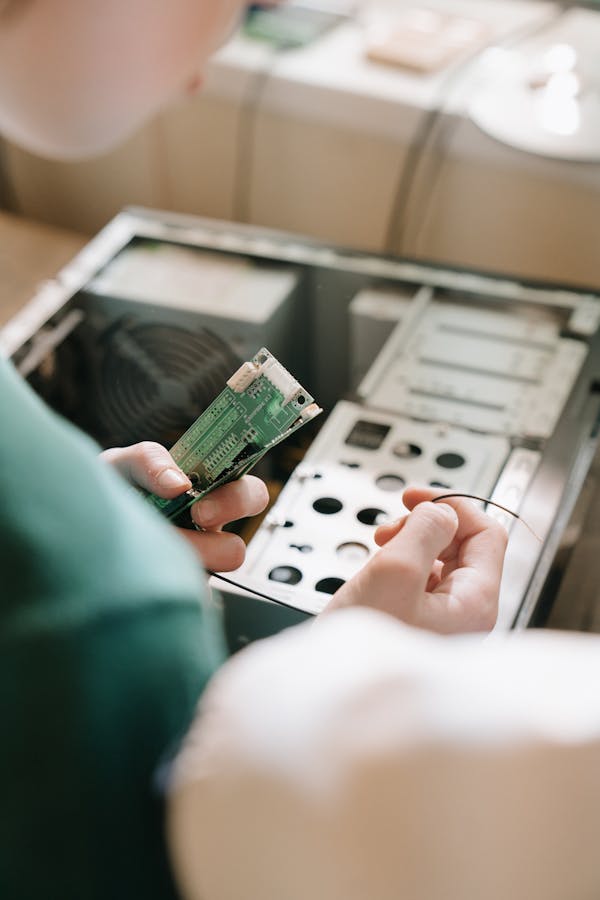Third party maintenance (TPM) transforms IT support by extending hardware lifecycles beyond OEM limits while slashing costs by up to 70%. This approach not only saves budgets but enhances sustainability through prolonged equipment use. With customizable service plans and global, multi-vendor coverage, TPM offers flexible, proactive support that keeps systems running smoothly without disrupting existing OEM agreements.
Understanding Third Party Maintenance and the Search for Cost-Effective, Flexible IT Hardware Support
You can find more information on this page: https://evernex.com/data-center-third-party-maintenance/. Third Party Maintenance (TPM) refers to independent IT hardware support provided by vendors that are not the Original Equipment Manufacturer (OEM). Unlike OEM support, which often ends once equipment reaches its End of Service Life (EOSL), TPM providers continue to deliver multi-vendor hardware support services—ensuring critical IT systems remain operational well after OEM contracts expire. This independent approach covers a wide variety of equipment, including servers, storage, and networking infrastructure, making it a favored option for businesses with diverse hardware needs or legacy devices.
Also to discover : How is blockchain shaping the future of technological innovation in the uk?
The core benefits of TPM solutions are immediately apparent: organizations can realize cost reductions of up to 70% compared to OEM maintenance agreements. Flexible contracts let businesses tailor support levels, ranging from on-site assistance to customized Service Level Agreements (SLAs) that align with operational demands or sustainability targets. These features help companies extend the life of their IT assets and reduce unnecessary upgrades, thus supporting both budget optimization and environmental goals.
TPM focuses on supporting not just current-generation equipment but also devices that have gone past OEM support deadlines. Hardware lifecycle management solutions help keep both legacy and EOSL hardware productive. This ensures business continuity, especially for critical, aging infrastructure that would otherwise require expensive replacements.
In parallel : Integrating product lifecycle management for cybersecurity success
Evaluating the Advantages, Drawbacks, and Key Services of Third Party Maintenance
Advantages: Reduced Costs, Customizable SLAs, Multi-Vendor and Legacy Support, Sustainability Considerations
Cost-effective IT hardware maintenance enables organizations to save up to 70% compared to OEM contracts, a substantial budget relief. Maintenance for legacy IT infrastructure is extended past OEM End of Service Life, avoiding unnecessary hardware refresh cycles. Businesses benefit from customizable SLAs—with flexible service agreements aligned to evolving operational needs—strengthening their leverage through extended warranty and maintenance plans.
Moreover, support services for networking equipment are provided by trained, multi-vendor professionals, ensuring comprehensive coverage and efficient incident response. Sustainability stands out: by prolonging the life of existing assets, organizations support environmental goals, decrease e-waste, and follow eco-friendly hardware lifecycle management.
Drawbacks: Limited Access to Manufacturer Resources, Challenges Supporting Proprietary Tech, Parts Sourcing for Very Old Gear
Despite its value, third party maintenance sometimes limits access to manufacturer-only diagnostic tools and proprietary software. Challenges in parts sourcing for older hardware may result in longer lead times, particularly for legacy systems. This issue can occasionally hinder third-party software upkeep and updates on specialized or highly-customized equipment.
Range of Services: On-site and Remote Repairs, Proactive Monitoring, Asset Lifecycle Management, Flexible Contract Terms
Key offerings include remote monitoring, rapid hardware repair and replacement services, and responsive network equipment service contracts. Proactive monitoring solutions, alongside asset lifecycle management, empower organizations to maintain uptime and adapt to ongoing technology needs with confidence.
Third Party Maintenance Market Dynamics and Best Practices for Provider Selection
Market shifts show more companies relying on third party maintenance provider selection criteria to guide decisions. The evaluation of third-party support vendors takes precedence as organizations look beyond cost, seeking vendors with proven global reach and expertise in multi-vendor environments. Key trends include consolidation of support into one contract, improved risk management with third-party service providers, and focus on sustainability through lifecycle extension.
Benefits of multi-vendor maintenance contracts continue to drive enterprise adoption, especially for those needing support for legacy IT infrastructure. These contracts streamline hardware lifecycle management solutions, providing single-point accountability for disparate assets across data centers. Benchmarking third-party support providers is vital; industry leaders such as Evernex stand out for global coverage, tailored service level agreements, and certified engineering teams.
For maintenance outsourcing for small and medium businesses, flexibility and responsiveness are essential. Carefully defined third-party maintenance provider selection criteria—spanning technical expertise, parts availability, and response times—can mitigate operational risks. Integrating TPM with IT operations and maximizing ROI means not just cost-effective IT hardware maintenance but also ensuring quality assurance and strong disaster recovery capabilities.






